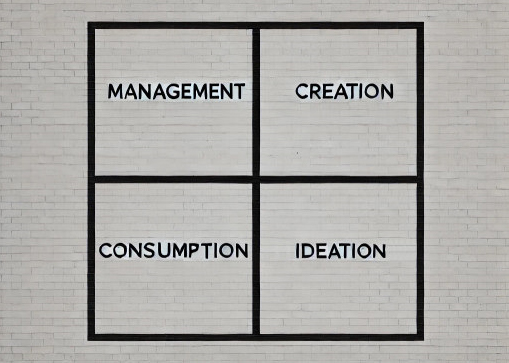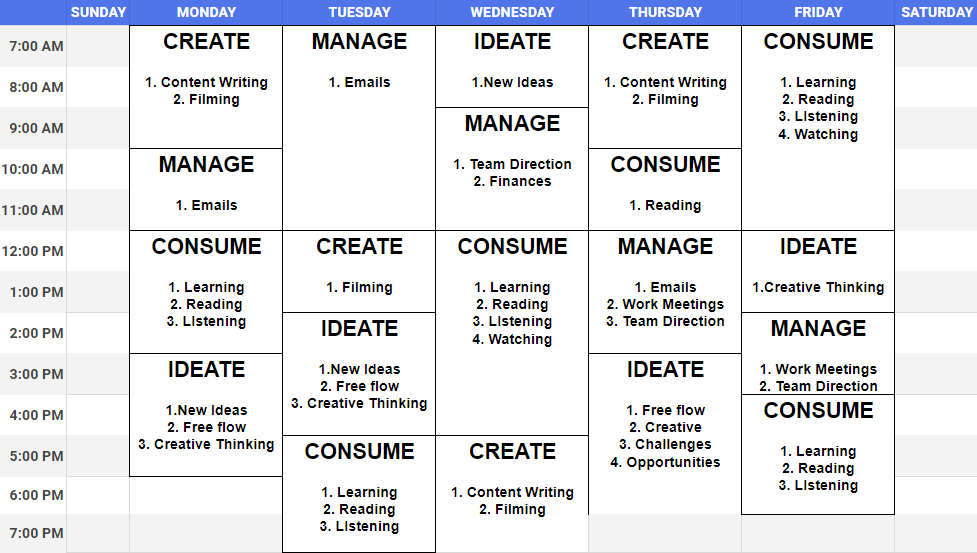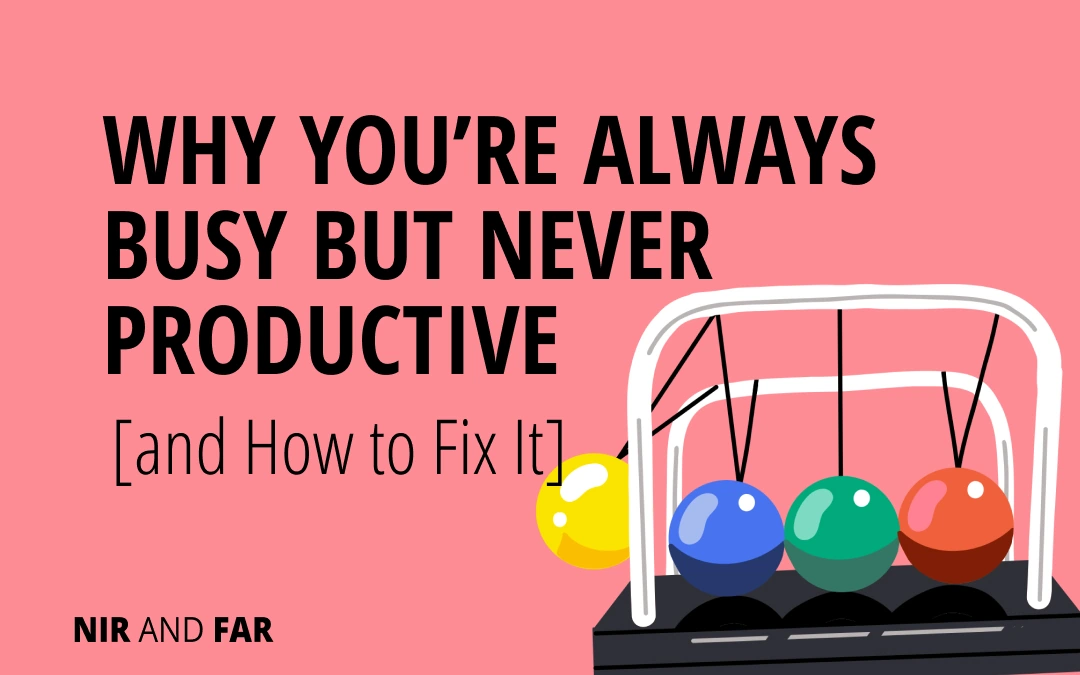Nir’s Note: This guest post is by Sahil Bloom, an entrepreneur, investor, and writer known for his engaging content on personal development, finance, and wealth-building. He is the creator of “The Curiosity Chronicle,” a biweekly newsletter that captivates millions of readers with insights on various topics. His new book, The 5 Types of Wealth, is a guide to building a life around the things you truly care about.
Most of us don’t think about how we spend our professional time—we just try and keep up. But the secret to working smarter (not harder) lies in managing our most precious resource.
Luckily, we have the best time-management technique—timeboxing—to help us. The concept is simple: Block off windows of time for distinct tasks.
Nir Eyal’s book, Indistractable, describes the steps each individual can take to build a custom timeboxed calendar. Part of his process involves splitting time into three life domains—you, your relationships, and your work—and categorizing your tasks and activities accordingly.
I break down timeboxing categories even further in the work domain to ensure each type of work gets its due.
I developed a model that splits professional time across four areas:
- Management
- Creation
- Consumption
- Ideation
You can use these four areas to reclaim your day, be creative, and make progress on the things that matter most.

The four types of professional time
Type 1: Management
Management Time is dedicated to coordinating, organizing, and overseeing tasks and people. It largely comprises reactive work, such as checking notifications and emails and being available to colleagues. Management Time is a staple of large organizations, and it’s where most of us spend the majority of our professional lives.
Typical activities of Management Time include:
- Meetings
- Calls
- Presentations
- Email processing
- Team and people management
Management Time can be highly productive and efficient. But more often than not, related tasks are done without intentionality or time constraints, and they become a huge time suck.
Unscheduled Management Time inherently values movement over progress. Replying to emails and attending meetings morph into distractions instead of meaningful work. You might have a major project due next week that requires your focus, but as long as you’re responding to time-sensitive emails and group chat messages, you tell yourself you’re being productive.
Does that lie sound familiar? It’s much easier to answer every ping, ding, and interruption from coworkers than it is to do reflective work—the focused work that requires deep thinking.
We have to limit Management Time so it doesn’t take over our professional calendars.
Type 2: Creation
Creation Time, the second most common type of professional time, is when we produce and advance work. It’s when meaningful progress is made, as it focuses on generating new ideas, solutions, and outputs. Unfortunately, Creation Time is what most of us scramble to get done in the gaps between Management Time blocks.
Creation Time activities include:
- Writing
- Coding
- Building
- Preparing
Thriving organizations prioritize the reflective work performed in Creation Time and ensure that Management Time doesn’t infringe on it. Google, for example, has historically practiced “20 percent time,” a rule that a team or employee should spend 20 percent of their time exploring new projects. It reportedly led to the launch of Gmail, Google News, and AdSense.
Yet few organizations help their workers protect Creation Time. A 2021 Zapier survey found that although most employees (90 percent) spend five hours a day on messaging apps, about 18 percent spend under an hour a day on their core responsibilities; 81 percent allot less than three hours for creative work. If employees spend all day on management tasks without devoting their attention to meaningful work, they’ll be fast-pedaling to nowhere.
Type 3: Consumption
Consumption Time is one of the two forgotten types of professional time. It is when professionals absorb information that fuels new ideas for creation and growth.
Consumption Time may involve:
- Reading or listening to articles, podcasts, and books
- Studying
- Attending a class, workshop, or industry conference
To paraphrase Atomic Habits author James Clear, everything you create is downstream from something you consume. Consumption Time focuses on quality upstream to ensure quality downstream.
Some of the greatest leaders and thinkers in history had dedicated Consumption Time. Benjamin Franklin’s daily routine included an hour block every morning to “prosecute the present study” (translation: to consume and learn something new).
Type 4: Ideation
Ideation Time is the second of the two forgotten types of professional time. It is when new ideas for creation and growth are cultivated and grown.
Ideation Time activities are:
- Brainstorming
- Journaling
- Walking
- Self-reflecting
Most of us have zero time for stillness and thought in our day-to-day professional lives. As a result, we make only linear progress, missing out on the asymmetric opportunities that require creative, nonlinear thinking.
Imagine a salesperson who spends their days making calls, following up on leads, and trying to hit quotas. If they ideated for 30 minutes every week, they might develop a new way to handle objections, a compelling storytelling technique, or a refined discovery process that consistently wins deals.
A Simple Hack to Assess Your Work Calendar
Before you can optimize your professional time, you need to understand how you currently spend it. A quick calendar exercise helped me identify my balance across the four types of time, and you can use it too. Starting on a Monday, at the end of each weekday, color-code the events from that day according to this key:
- Management
- Creation
- Consumption
- Ideation
At the end of the week, review the mix of colors on the calendar. The trends should leap out at you immediately, but you can also ask yourself:
- What color dominates the calendar?
- Are there distinct windows for Creation Time?
- Are the colors thin and randomly scattered, meaning you’re constantly task-switching and losing focus, or do they appear as thicker chunks, meaning you’re giving each type of time the attention it needs?
Next, take those insights and follow Nir’s process of refining your weekly timeboxed calendar to reach an optimal balance.

Use our schedule maker to create your own workweek
Three Tips for an Optimal Balance
Tip 1: Batch Management Time
Management Time is necessary but can dominate our days if we let it. Calls, meetings, presentations, and emails fill every moment of the day, making us feel constantly busy—which leads to burnout.
To fix this, we can enact Parkinson’s law, which asserts that work expands to fill the time available to complete it, and add time constraints with timeboxing:
- Create discrete blocks of time each day for handling major Management Time activities.
- Schedule one to three email-processing blocks per day.
- Schedule one to three call and meeting blocks per day.
The goal is to avoid a schedule where the red bleeds out across every day. Management Time windows should be as discreet as possible to create space for the other types of time.
Your ability to do this will rise with your career progress. When you’re just starting your career, you likely won’t have as much flexibility or control over your calendar because you have to be available to your managers on their schedule. So, having one long period of Management Time won’t be conducive to your role; it is better to start with short, incremental periods of Management Time. People further along in their careers gain more control of their calendars and may be able to schedule larger blocks of Management Time.
Tip 2: Increase Creation Time
Creation is what propels us forward with more interesting projects and opportunities.
Of course, giving our attention to Creation Time means we are unavailable to answer messages and emails or attend meetings. So how do we get our employers, managers, and coworkers on board with that?
Nir came up with an answer: schedule-syncing. It’s a tool for clear communication and harmony with your manager and teammates.
Bring your timeboxed calendar, which should include blocks for Creation Time, to a meeting with your manager. Explain why you need this time for uninterrupted reflective work. Once you have your manager’s approval, you can share your timeboxed calendar with your coworkers so they know when you have Creation Time and are thus unavailable.
Tip 3: Create Space for Consumption and Ideation Time
People typically don’t consider Consumption and Ideation activities to be part of their job. But they are essential to new ideas and progress.
To start, schedule one short block per week for Consumption and one short block per week for Ideation. Maybe you give just 30 minutes to each type of time. Practice doing Consumption and Ideation activities when you said you would. Once you prove your ability to stick to that routine, consider increasing the presence of these types of time in your schedule.
Employers can help their workers find this time by creating fixed rules (as Google did). For example, they might implement a weekly hourlong “think block” (say, Friday at 2 p.m.) during which no meetings can be scheduled. This tactic similarly applies to Creation Time: Employers can enforce a daily Creation window for priority tasks.
Free Habit Tracker
Design your ideal day and build your best life.
Your email address is safe. I don't do the spam thing. Unsubscribe anytime. Privacy Policy.
Balancing your workday isn’t about doing more—it’s about doing what matters. By structuring your time intentionally, you can carve out space for meaningful work. The key isn’t to eliminate Management Time but to contain it, ensuring that your best energy goes toward the work that truly moves the needle. Try it for a week—your future self will thank you.
Related Articles
- Schedule Maker: a Google Sheet to Plan Your Week
- Habit Tracker Template in Google Sheets
- The Ultimate Core Values List: Your Guide to Personal Growth
- Timeboxing: Why It Works and How to Get Started in 2024
- An Illustrated Guide to the 4 Types of Liars
- Hyperbolic Discounting: Why You Make Terrible Life Choices
- Happiness Hack: This One Ritual Made Me Much Happier

